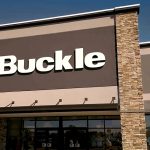Under Armour reported that sales slumped 4 percent in the fiscal first quarter ended June 30, and profitability was in line with plans. However, the company provided a weak second-quarter forecast, with sales declines worsening and margins impacted by tariffs. Sales are expected to decline 6 percent to 7 percent in the current quarter, pulled down by a low-double-digit percent decrease in North America.
Analysts had expected sales to decline by roughly 3 percent. Adjusted EPS is anticipated to be between $0.01 and $0.02 compared to the analysts’ consensus target of $0.26.
For the first quarter, earnings were $0.02 per share, below the analysts’ consensus target of $0.03, but in line with the company’s guidance of $0.01 to $0.03. Sales were $1.13 billion, in line with analyst targets.
“We are pleased our quarterly results met or exceeded our expectations as we drive a bold transformation – sharpening Under Armour into a brand where sports credibility, innovation and style meet operational discipline,” said Under Armour President and CEO Kevin Plank. “Despite ongoing uncertainty, our brand is gaining strength and we’re executing our strategic plan with clarity and confidence.”
Plank continued, “Moving ahead, we’re focused on strengthening our brand positioning with premium products and increasing our average selling prices through innovative offerings, optimizing our top-volume programs, and creating a more compelling full, price-to-value proposition. Regardless of the backdrop, this is about building a fearless, thoughtful, and stronger Under Armour.”
 First Quarter Fiscal 2026 Review
First Quarter Fiscal 2026 Review
- Revenue declined 4 percent to $1.1 billion (down 4 percent currency-neutral). Guidance had called for a decline of 4 percent to 5 percent.
- North American revenue decreased 5 percent to $670 million, while international revenue declined 1 percent to $467 million, representing a 2 percent currency-neutral decrease. Within the international business, revenue in EMEA increased 10 percent (up 6 percent currency-neutral), decreased 10 percent in Asia-Pacific (down 10 percent currency-neutral), and declined 15 percent in Latin America (down 8 percent currency-neutral).
- Wholesale revenue decreased 5 percent to $649 million, and direct-to-consumer revenue fell 3 percent to $463 million. Revenue from owned and operated stores increased 1 percent, while eCommerce revenue declined 12 percent and accounted for 31 percent of the total direct-to-consumer business for the quarter.
- Apparel revenue decreased 1 percent to $747 million; footwear revenue declined 14 percent to $266 million; and accessories revenue increased 8 percent to $100 million.
- Gross margin increased 70 basis points to 48.2 percent, primarily due to favorable foreign exchange, pricing, and product mix, partially offset by an unfavorable channel mix and higher supply chain costs compared to the prior year. Guidance had called for gross margins to increase 40 to 60 basis points.
- Selling, general, and administrative expenses decreased 37 percent to $530 million as the prior year included a significant legal reserve expense. Adjusted selling, general, and administrative expenses decreased 6 percent to $522 million, which excludes approximately $8 million in transformation expenses related to our Fiscal 2025 Restructuring Plan. Guidance had called for net SG&A to decrease approximately 40 percent and adjusted SG&A expenses to “leverage slightly” versus the year-ago quarter.
- Restructuring charges were $13 million.
- Operating income was $3 million compared to an operating loss of $300 million. Excluding transformation expenses and restructuring charges, adjusted operating income was $24 million, compared to $8 million a year ago. Guidance had called for operating income in the range of $5 million to $15 million and between $20 million and $30 million on an adjusted basis.
- Net loss was $3 million against a loss of $305 million. Adjusted net income was $9 million against $4 million a year ago.
- Diluted loss per share was $0.01. Adjusted diluted earnings per share was $0.02. Guidance had called for earnings to be in the range of break-even to $0.02 on a reported basis and $0.01 to $0.03 cents on an adjusted basis.
- Inventory increased 2 percent to $1.1 billion.
- Cash and cash equivalents totaled $911 million, including $400 million in senior notes raised during the quarter. The company intends to use the net proceeds, together with borrowings under its revolving credit facility and cash on hand, to redeem, repurchase, or otherwise retire the company’s $600 million in senior notes due June 2026. There were no outstanding borrowings under the company’s $1.1 billion revolving credit facility.
Fiscal 2025 Restructuring Plan
In May 2024, Under Armour announced a restructuring plan aimed at improving the company’s financial and operational efficiencies. The plan is estimated to cost between $140 million and $160 million, with up to $90 million expected to be cash-related and as much as $70 million projected as non-cash charges. By the end of the first fiscal quarter of 2026, the plan had resulted in the company recording $71 million in restructuring and impairment charges, as well as $39 million in other related transformational expenses. Of the total $110 million incurred so far, $65 million is cash-related, and $45 million is non-cash-related. The company anticipates that the remaining charges detailed in the updated restructuring plan will be recognized by the end of fiscal 2026.
Second Quarter Fiscal 2026 Outlook
Given ongoing uncertainty around trade policies and the broader macroeconomic environment, including potential demand and cost impacts from tariffs, key considerations for our fiscal 2026 second-quarter outlook compared to the same period in the prior fiscal year include:
- Revenue is expected to decline 6 percent to 7 percent. This includes an anticipated low-double-digit percent decrease in North America, high-single-digit percent growth in EMEA, and a low-teens percent decline in the Asia-Pacific region. Analysts, on average, were expecting a decline of approximately 3 percent.
- Gross margin is expected to decline 340 to 360 basis points, primarily due to supply chain headwinds, mainly resulting from anticipated impacts of tariffs, along with an unfavorable channel mix. Favorable foreign exchange impacts and pricing benefits are expected to partially offset this decline.
- Selling, general, and administrative expenses are expected to increase at a low double-digit percentage rate. Excluding transformation expenses related to the company’s Fiscal 2025 Restructuring Plan, adjusted SG&A is expected to grow at a high-single-digit rate, primarily driven by higher marketing investments as we lap a timing shift that pushed most of last year’s spend into the second half.
- Operating income is expected to range from a $10 million loss to $0 million (breakeven). Excluding projected restructuring charges and transformation expenses, the forecasted second quarter adjusted operating income is expected to be between $30 million and $40 million.
- Diluted loss per share is expected to range from $0.07 to $0.08 cents. Adjusted diluted earnings per share are anticipated to be between $0.01 and $0.02 cents. Analysts’ consensus target had been $0.26.
Image courtesy Under Armour x Mansory















